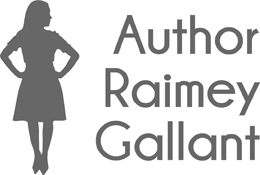
My first editor, back before I switched genres, gave me some advice about believability issues in my manuscript that I’ll never forget. Now, this advice was passed down to her from a mentor and then down to me, but despite the game of telephone, it still makes a heck of a lot of sense.
When I received my edit letter from the lovely Heather Ezell (who I highly recommend for all your YA editing needs), I saw a familiar comment that I’d been getting from some of my critique partners. A few of my situations weren’t believable. She didn’t believe that my scenes could play out in real life the way I’d written them, wasn’t buying it. I chewed on this criticism, and told her I wasn’t sure what to do, because the events in question actually had played out in a similar way for me in real life.
To paraphrase her thoughtful reply, she wasn’t saying that the situations could never happen, but that within the confines of the context/story and the portrayal of the events/characters, she didn’t believe it yet. She said it’s more about reframing, giving the reader the means to believe.
And that hit me like a light bulb to the thought bubble.

Let’s take the Jack and Jill example, because it’s something simple enough to workshop in a blog post. We’ve all heard this nursery rhyme innumerable times, but let’s pretend we haven’t. When you read the next paragraph, pull on your critique hat and try to find, if anything, what sticks out for you as not yet believable given the confines of the narrative.
Jack and Jill went up the hill to fetch a pail of water. Jack fell down and broke his crown, and Jill came tumbling after.
To me, I’m not convinced that Jill is as clumsy as Jack. What caused her to fall? Given a teensy bit of additional context, the story will make more sense. (Yes, I realize I’m a terrible poet.)
Jack and Jill went up the hill to fetch a pail of water. Jack fell down and broke his crown, and because Jill tried to grab his hand, and she slipped too, she came tumbling after.
OR
(We learn that Jill is prone to fainting in a prior verse.) Jack and Jill went up the hill to fetch a pail of water. Jack fell down and broke his crown, and at the sight of it, Jill swooned, came tumbling after.
There you have it. The next time an editor or critique partner or beta reader says, “I’m  not buying it,” before you scrap the scene altogether, try to determine if what you need is to set the scene up with a little more context.
not buying it,” before you scrap the scene altogether, try to determine if what you need is to set the scene up with a little more context.
This post is part of the #AuthorToolboxBlogHop. So many great blogs to keep hopping through. Click here to join the hop and to see what other writing tips you can glean from this month’s edition.


That’s why critique partners are so valuable. They let you know when you’ve left out some detail that’s necessary for the scene to work.
BTW, thanks for letting me know that my Gravatar wasn’t linking back to my blog. I haven’t fixed it yet, because I can’t find any way to link my current account to a website, but I’m still working on it.
LikeLiked by 1 person
It took me a while to figure it out, if I remember correctly. 🙂
LikeLike
It’s working!
LikeLike
Excellent post Raimey. Juggling feedback isn’t emotional and it’s easy to scrap a scene but I see the balance. Thank you for the editor name too! I will look into her services down he road 🙂
LikeLiked by 2 people
My pleasure! Heather is great, if you ever decide to hire her. She’ll dedicate herself to your project, that’s for sure.
LikeLiked by 1 person
Raimey I am sure I try to do this, but until my critique partners give me the feedback I just don’t know for sure. thanks for the constructive post.
LikeLiked by 1 person
My pleasure!
LikeLike
Well said! Context is one of the biggest things I struggle with, since I write in fantasy worlds that have been living in my head for 10+ years. Things – sometimes huge things the story is entirely contingent on – are so obvious to ME that I forget to explain them entirely. I’m actually currently doing a rewrite mostly to fix that problem…
LikeLiked by 1 person
You’ve got this!
LikeLike
That’s my problem as well. I think something is obvious, but a new reader doesn’t know what I know (often, what I deleted while revising and editing!). It’s a balancing act.
LikeLiked by 1 person
Exactly. We need readers/editors to tell us when something isn’t as clear as we think it is. Definitely a balancing act.
LikeLiked by 1 person
Very interesting article, I like the Jack and Jill example. Also it’s always good to find ways that allow you to save a scene from scrapping.
LikeLiked by 1 person
I agree!
LikeLike
That was hugely insightful and thoughtful advice. I had not look at it that way. Great perspective.
LikeLiked by 2 people
Thanks, Juneta!
LikeLike
Great post. Feedback should always be taken with a grain of salt but if the same comments are made, its time to question whether a change is needed.
LikeLiked by 1 person
Thanks for stopping by, Cheryl!
LikeLike
Great advice! And so succinctly imparted, too. And I love how you made Jack ‘n’ Jill relevant again – I’m sure Jill is especially grateful for your feminist defense, lol.
LikeLiked by 1 person
Yeah, Jill gets a bum rap. 😉
LikeLiked by 1 person
Great post 🙂 Critique partners are invaluable for pointing such things out. I recently had two people read a couple of my short stories and point out things I never realised were issues! When writing fantasy, everything tends to work in my head: It’s the getting it down on paper in a way that makes sense to everyone else that I sometimes struggle with.
LikeLiked by 1 person
My first reaction when I finish a piece is, “No, I don’t need a critique partner for this. I’m good.” But of course, I’m always wrong.
LikeLiked by 1 person
Good advice, and so much easier than chucking the entire scene.
LikeLiked by 1 person
Thanks!
LikeLiked by 1 person
Great post! I often notice implausibility issues in writing I critique because I struggle with this issue as well. I often cross the line between subtle hints and totally obscuring important details, and I’ll think about context and what’s necessary to make things more believable. Great post!
LikeLiked by 1 person
Thanks so much, Caroliena! 🙂
LikeLike
As a reader, I’ve put many a book down when I didn’t believe that what the characters were doing made sense. They don’t have to do what I would do in the situation, but I have to be able to see where they’re coming from and why.
LikeLiked by 1 person
Agreed.
LikeLike
I’ve had some great comments from beta readers pointing out that they don’t believe something. I love that type of comment, because it’s usually easy to fix, and if one reader thought it, more will too. So I listen carefully when I get the unbelievable comment. Great post, Raimey.
LikeLiked by 1 person
Thanks, Kristina! I listen to the believability comments closely too. I dwell on them until a solution presents itself. 🙂
LikeLiked by 1 person
Thanks for this! Just one more thing to think about as we write! Gosh, there are so many. I like the idea of providing more context rather than scrapping the scene. What we need to do, however, is still give the reader room for their imagination. If we tell them too much, it’s no fun reading! Another tricky balance.
LikeLiked by 1 person
Yes! Sometimes, I feel like an author of a well-selling book is giving me too much to the point of repetitiveness, and other times, I’m like, what is going on here? I don’t believe this.
LikeLike
Yes x 1000! Reframing and giving more context can make the biggest difference.
LikeLiked by 1 person
Thanks, Jess. 🙂
LikeLike
That’s so nice! This is something I’m always afraid of. I write fantasy and even if it’s made up, it needs to be believable. Waiting for my CP to get back to me this week with her notes. 😳 a little nervous! 😂
LikeLiked by 1 person
Deep breaths!
LikeLiked by 1 person
love this tip. Plausibility is completely within the author’s control. I run into this problem when I try to make my characters do something, rather than letting the characters be in control of their own destinies. Thank for the tip
LikeLiked by 1 person
My absolute pleasure. 🙂
LikeLike
My son drove me crazy when it came to this. “Why? Why did they…” I found the answers, but it wasn’t always easy. Knowing it and putting it down so the reader can know it too is a good lesson for all of us.
Anna from elements of emaginette
LikeLiked by 1 person
Well put.
LikeLiked by 1 person
It’s funny how often this type of thing comes up. In college I wrote a story about a character who pulls the cap off of a liquor bottle with his teeth, and everyone in my writing class got up in arms because they had always seen liquor bottles with screw tops. Of course there were ones that had a cork under the cap, but it was far less common.
It’s funny how things can be true, but people still don’t believe them, and because the story is “fiction”, they feel they have more leeway to question it.
I think your ideas are spot on. There’s no way that “debating the issue with the audience” will work, but finding small ways to reinforce or establish a precedent are definitely good constructive solutions to feedback like that.
Thanks for sharing.
LikeLiked by 1 person
The second paragraph you wrote here, I tried explaining this point to someone recently, but I’m not sure I was successful in communicating my point. I think I said something like, “Yes, fiction is meant to at times mirror real life, but it isn’t real life, it’s augmented reality, and the moment a reader doesn’t believe something, you’re risking them putting your book down.”
LikeLiked by 1 person
It’s funny how we can have stories where people accept dragons or aliens, but question little details like this.
LikeLiked by 1 person
Another straightforward and actionable post! Although if Jill is swooning so often she might want to get checked for low blood pressure. 😉 Fixing implausible holes is one of my most instinctive actions in writing. I even do it for bad movies I watch as I watch them, which leads to some interesting post-movie conversations.
LikeLiked by 1 person
Yeah, Jill doesn’t show good judgment, in my opinion.
LikeLike
This is great advice! I love to use “yet” in my classroom, too. “I don’t have a conflict for my story, so I’m not going to finish it.”
“You haven’t figured it out, yet,” I tell my student. “What would be a logical conflict for a character in the situation you’ve created?”
That seems to spark something! I know it’s not the same thing, but the concept is similar: don’t scrap it until you’ve tried to fix it! Excellent post!
LikeLiked by 1 person
“Yet” is such a good word for critiquing fiction, love it. 🙂 And I love how you use it in the classroom to spark creativity. Good thinking. 🙂
LikeLiked by 1 person
Great example here, Raimey! I’ve had an editor tell me the scene wasn’t believable in one of my short stories. And like you, I explained that something close to this scene happened to my family while camping at Sequoia National Park. Sometimes real life seems unbelievable in story. But clarifying and adding context helps out many a scene and story. Thanks for all you do, Raimey!
LikeLiked by 1 person
My pleasure, of course!
LikeLike
Whenever I tell my clients “I’m not buying it,” I definitely want them to sell it to me, not give up! There’s always a way to sell it. You may have to try a few different tricks before they stick, but if you believe a thing happens a certain way, then all you have to do is convince the reader. And if you believe it already, how hard can it be? (Yeah, I know… hard!)
LikeLiked by 1 person
Well put. 🙂
LikeLike
This is great! Sometimes things seem clear when you write it, but the reader doesn’t see it so clearly. I’m currently reworking a manuscript that has a few of these issues, so this is a good reminder not to give up a scene before seeing how you can make it more believable.
LikeLiked by 1 person
Thanks!
LikeLike
Great advice, Raimey, thank you.
LikeLiked by 1 person
Thank you so much, Drew!
LikeLiked by 1 person
Thanks for this useful tip! I have an feeling that I may have a few of these issues when I send my novel out to beta-readers- I will keep this in mind 🙂
LikeLiked by 1 person
Yea!
LikeLiked by 1 person
Hi! I love the Jack and Jill example! It’s so important to have others edit your work because things that seem plausible to you might not seem the same to others!
Leslie
LikeLiked by 1 person
Thanks, Leslie!
LikeLiked by 1 person
I recently received lots of excellent feedback and it’s amazing how different it was from one person to the next. All of it useful in its own way. Writer’s cannot do without it because we cannot see past our own mind, our own ideas. I often write minimally and the reader needs more information to understand fully what’s happening because, well, I know. Lol. Great post, as always.
LikeLiked by 1 person
Thanks so much, Shah!
LikeLike
I liked this especially as a way to take criticism without being offended or defensive.
LikeLiked by 1 person
Exactly. It made me look at critiques through a new lens.
LikeLiked by 1 person
I agree, the situation must be believable. I think this advice applies in all our writing. Thank you for the reminder.
LikeLiked by 1 person
There’s alelbow rooms a elbow room to sell it. I’m currently reworking a manuscript that has a few of these issues, so this is a honorable monitor not to devote up a shot before seeing how you can ca-ca it more believable.
LikeLiked by 1 person